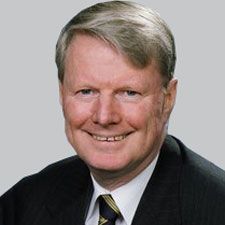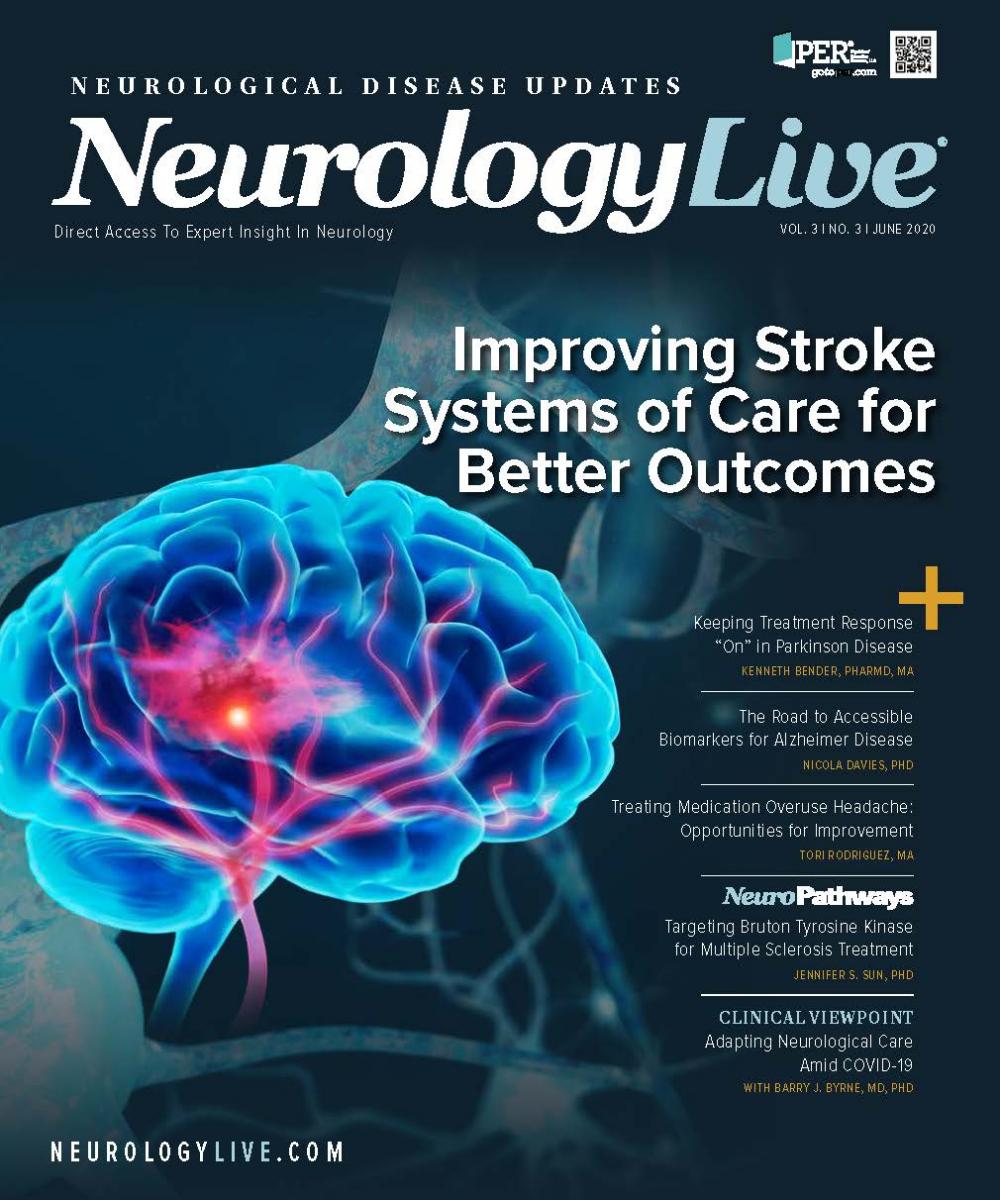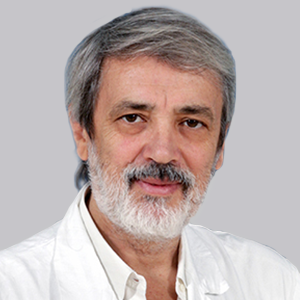Publication
Article
NeurologyLive
Managing Narcolepsy and Excessive Daytime Sleepiness
Author(s):
In this Peer Exchange, sleep experts provide insight into the latest narcolepsy treatments and areas that require further research.

Michael J. Thorpy, MD
Although the number approved treatments for narcolepsy has increased, challenges remain in addressing the underlying causes of the disease, as well as in identifying individuals with the condition. When left untreated, narcolepsy can interfere with psychological, social, and cognitive functions, and one needs, the use of new therapeutic options, and the latest clinical trials to provide practical perspective on how recent data might apply to clinical practice.
In a recent NeurologyLive® Peer Exchange, Michael J. Thorpy, MD, director of the Sleep-Wake Disorders Center at Montefiore Medical Center and professor of neurology at Albert Einstein College of Medicine in Bronx, New York, led a panel of sleep experts in a discussion about these unmet needs, the use of new therapeutic options, and the latest clinical trials to provide practical perspective on how recent data might apply to clinical practice.
Unmet Needs
For Eveline Honig, MD, MPH, executive director of the Narcolepsy Network, patients have always complained about the lack of medications available to them, and rightfully so, as they and their physicians have fewer than 10 options from which to choose.
“It takes forever to get a medication approved,” she said. “That’s also why we’ve been going to the FDA and requesting more medications. That’s really very important so people have a choice; not everything works for everybody. People need to experiment. It takes a while. It’s good when there is more of a choice. I think that’s really important.”
Russell Rosenberg, PhD, DABSM, CEO and chief science officer at NeuroTrials Research, echoed the sentiment, explaining that quite a long period passed between the FDA’s approval of the modafinils in the late 1990s and some of the new agents approved in 2019. “I think that physicians need to understand that it’s not stopping here. We still need more tools,” he said.
Additionally, a number of challenges exist in the treatment of symptoms beyond sleepiness. Kiran Maski, MD, MPH, assistant professor of neurology at Harvard Medical School and director of the Sleep Clinic at Boston Children’s Hospital in Massachusetts, described the nonspecific symptoms as her biggest challenge. “It’s the fatigue, what’s described as brain fog. This difficulty thinking, conveying thoughts, or speaking—the symptoms that are not studied or not responsive to medications are really functionally limiting to patients,” she said.
Rosenberg noted that his experience in research has been similar, with patients explaining that medication will help them stay awake but rarely seem to provide mental clarity at the same time. He said that for many of these patients, simply staying awake is not enough to solve their problems.
“I think some of the newer drugs are a bit better than the older ones in that regard,” Thorpy added. “Very rarely will you hear a patient who is on sodium oxybate say, ‘This has dramatically changed my life. I really feel more normal.’ Unfortunately, it doesn’t happen enough. But it does happen occasionally.”
The older agents—particularly the amphetamines and methylphenidate—appear to have their faults, as well, Thorpy pointed out, as many help patients stay awake only to an extent. He explained that if a patient with narcolepsy, even one on a high-dose therapeutic, entered a darkened room and turned out the lights, they would be asleep right away.
“Patients are able to do things better with these medications, but there’s still that background pressure for sleep, even though they are seemingly more awake,” Thorpy said. “Hopefully, in the future, the drugs will be more effective at actually eliminating that pressure for sleep that’s in the background.”
Solriamfetol
Despite not having a completely unique mechanism of action, Jazz Pharmaceuticals’ recently approved solriamfetol (Sunosi) offers another interesting approach to narcolepsy, according to Alon J. Avidan, MD, MPH, professor in the Department of Neurology at the David Geffen School of Medicine at the University of California, Los Angeles (UCLA) and director of the UCLA Sleep Disorders Center.
The dual-acting dopamine and norepinephrine reuptake inhibitor was approved for the treatment of excessive daytime sleepiness in both obstructive sleep apnea (OSA) and narcolepsy in March 2019. Its safety and efficacy were established through the TONES clinical trial program, whose results showed statistically significant changes in sleepiness and wakefulness in those with narcolepsy.
“It targets the structures in the brain that are promoting wakefulness,” Avidan explained. “So in my mind, it has the unique ability to promote a level of alertness that you would see with the psychostimulants but without the sympathomimetic adverse effects.”
Rosenberg and Thorpy noted that the performance of solriamfetol in clinical trials was impressive on self-reported measures like the Epworth Sleepiness Scale, as well as the Maintenance of Wakefulness Test, which Rosenberg described as the “flip side of the Multiple Sleep Latency Test. We put patients in a dimly lit room, a boring situation, and ask them to try to stay awake. Patients who are pathologically sleepy have great difficulty staying alert. And this drug did show pretty impressive results on those tests,” Rosenberg said. Additionally, he noted that with the need to manage poly- pharmacy in many of these patients, solriamfetol presents a good option for the physician’s toolbox.
Although the Jazz product is not indicated for use in children, Maski noted that she has had some experience with it and that its long-acting nature is an advantage for patients.
Pitolisant
In August 2019, another long-acting agent, Harmony Biosciences’ selective histamine 3 receptor antagonist/inverse agonist pitolisant (Wakix), received FDA approval for the treatment of excessive daytime sleepiness in adults with narcolepsy. Additionally, it was the first treatment for narcolepsy to not be scheduled as a controlled substance by the Drug Enforcement Administration.
“It’s nice because this is the only wakefulness drug that is nonscheduled, so it’s easier for physicians to prescribe. It may be easier to get multiple prescriptions, or [at least] enough so the patient doesn’t have to come back every month to get a new prescription,” Rosenberg said. “But it’s not without its potential adverse effects and issues that physicians need to be cautious about. Similar to the modafinils, it can reduce the efficacy of oral contraceptives. But it’s certainly a nice new tool for physicians to have in their toolbox for treating narcolepsy.”
Pitolisant also has a unique mechanism of action as a selective histamine 3 receptor antagonist/inverse agonist, which separates it from what Rosenberg described as the “usual suspects”: dopamine, norepinephrine, acetylcholine, and serotonin.
“This is the only drug that does actually have an impact on increasing histamine in the brain, therefore causing wakefulness. Others may be coming down the line after pitolisant, but this is currently the only drug to address that mechanism of action,” Rosenberg said.
The therapy showed success in its clinical development for excessive daytime sleepiness associated with narcolepsy based on improvements in Epworth Sleepiness Scale scores. It has been additionally approved for the treatment of cataplexy in Europe, although it has not received that indication in the United States. Rosenberg noted that it does appear to have a positive impact on reducing cataplexy, and some sleep specialists have begun using it off label for that particular purpose.
“I should also mention that this is a once-a-day dosing. There’s no need to give a second dose,” Rosenberg said. “We participated in an early-access program for this drug and found that it seemed to carry most patients through the late afternoon, in terms of keeping them alert and awake. It didn’t run out of steam by lunch- time. It just kept going. One of the adverse effects of any poten- tial wake-promoting drug is causing insomnia in patients. We did see a little bit of that, but I don’t think that’s unique to pitolisant. I think you have to be careful and make sure patients are taking the dose right when they wake up in the morning, especially if they’re having any difficulty falling asleep at night.”
In addition to excessive daytime sleepiness, another area of narcolepsy treatment that has long faced challenges is the treat- ment of pediatric patients, which has been particularly limited by a lack of clinical trials and thus a reliance on case-based reports and observational data. Pitolisant, however, is being assessed in chil- dren in a clinical trial based in Europe.
“Hopefully, we, too will have another tool in our toolbox,” Maski said. “I see patients 25 [years] and younger, and I also was part of the early-access program. I think this medication has a slightly lower adverse effect profile in terms of anxiety or mood disorders, so it’s been beneficial for patients who have those comorbidities where stimulants can really make those situations worse. This is a medication that seems to be a little bit more neutral in regard to mood comorbidities.”
Choosing a Treatment Option
These 2 new agents have given sleep specialists hope in their ability to provide treatments for those who still struggle with daytime sleepiness with the traditional stimulants and the wake-promoting agents. With literature suggesting that up to 60% of treated patients still experience significant daytime sleepiness, there will likely be advocates for add-on therapy as well. In turn, that would require experimentation with multiple add-on therapies based on patient phenotype.
Of course, as more therapies such as solriamfetol and pitolisant enter the market, the decision-making process for choosing a treatment for a specific patient must adjust accordingly. Some physicians use a treatment algorithm of sorts for this process, whereas others may have a go-to agent for their first choice. For Avidan, it is not always that simple.
“I do not have an algorithm that I put the patient through and then that’s the only algorithm I follow, because all these medications have their pluses and minuses,” Avidan explained. “Patients may present with narcolepsy as a different phenotype, in that some patients may have underlying depression or anxiety. Some may have certain underlying comorbidities for which some of these agents may not be the most appropriate first-line therapy.”
Avidan explained that he does, however, follow a general rule for those with type 1 and type 2 narcolepsy: Try wake-promoting agents. These commonly prescribed agents offer an advantage for patients because they tend to provide once-per-day dosing that patients can administer upon awakening in the morning. Some require a second dose, possibly in the late morning or early afternoon.
“We may be able to, at that point, assess the patient and evaluate whether to prescribe additional therapy—and for those individuals, if they do feel sleepy at 1 o’clock, 2 o’clock, or if they feel so sleepy that it’s affecting their driving, then a short-acting methylphenidate medication would actually be effective,” Avidan said.
For those who present with excessive daytime sleepiness and cataplexy, the decision-making process follows a different path. Avidan noted that he favors sodium oxybate for those with frequent cataplexy. He detailed that in this case, it’s important to have 1 drug that addresses multiple facets of the disease by being taken at night, with a second dose 2 to 4 hours later, which can offer very effective improvement of cataplexy in addition to helping the daytime sleepiness.
“Bear in mind that a lot of patients who have cataplexy may have a few episodes per week or may not require traditional therapy or a specific therapy for cataplexy itself and are able to manage it by avoiding situations—nothing that I would advocate the patients do, but they may not require a specific therapy directed at the cataplexy,” Avidan said.

Newsletter
Keep your finger on the pulse of neurology—subscribe to NeurologyLive for expert interviews, new data, and breakthrough treatment updates.




